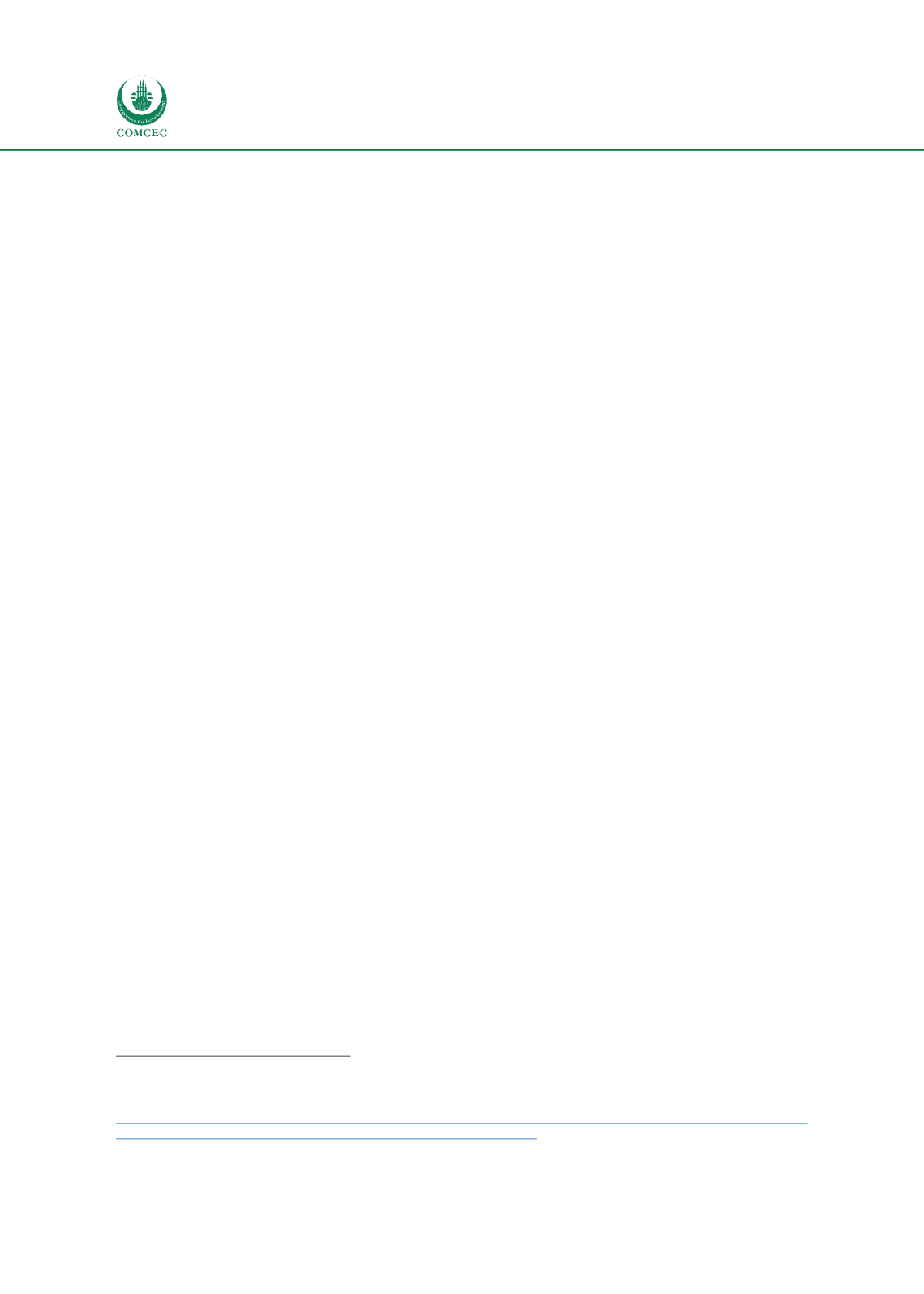

Improving Agricultural Market Performance
:
Creation and Development of Market Institutions
72
recognized that improving food safety systems has many short and long-term costs and can be
a challenging process for many countries to undertake.”
119
3.3.2 Packaging, Containers, and Labeling
Food safety frameworks usually have a corresponding component that allows consumers to
understand the contents, freshness, and provenance of the food contained. As an example of an
good practice, Pakistan generally follows Codex Alimentarius rules for packaging
requirements, and generally accepts packaging material if allowed in the exporting country.
Pakistan does not have any packaging requirements related to environmental concerns, such
as waste disposal or recycling.
For Pakistan, the following information must be placed in a durable and legible manner on all
packages in the consignment or container
120
:
The name of the product,
The name and address of the manufacturer,
The net contents,
The date of manufacture and date of expiration,
The percentage of dye contents,
The normal storage stability,
That the contents are free from pork and pork products,
That the contents are fit for human consumption and that any animal product was
obtained from an animal slaughtered according to ‘Halal’ requirements, and
Packing may not contain any word or inscription of a religious connotation or any
obscene picture that may offend the religious feeling of any sect, class or group in
Pakistan.
3.3.3 Documentation & Certification
Aside from normal food safety certification standards, many OIC Member Countries also
adhere to or have developed their own certification standards for Halal. Such certifications –
which mean that the food is free from pork products, alcohol, certain other ingredients, and
that all meat has been butchered under Islamic guidelines – is necessary for importation into
Islamic countries.
In addition to certification, some Islamic countries (for example Saudi Arabia and other middle
eastern countries) include lab testing of imported products to ensure that foods do not contain
any forbidden components. The Halal market is a growth opportunity for OIC Member
Countries, as there is a very large global market for Halal foods from both Muslim and non-
Muslim consumers. This demand has spurred non-Muslim nations to accelerate their
production of certified Halal foods, including the United States, Canada, Brazil, New Zealand,
Australia, Thailand, the Philippines, Singapore, China, and India.
119
FAO (2005),
National Food Safety Systems In Africa – A Situation Analysis
, paper prepared by FAO Regional Office for
Africa, Accra, Ghana, Harare, Zimbabwe, pp. 69-70, FAO: Rome.
120
FAIRS (2017), “Pakistan - Food and Agricultural Import Regulations and Standards – Narrative,” available at
https://gain.fas.usda.gov/Recent%20GAIN%20Publications/Food%20and%20Agricultural%20Import%20Regulations%20 and%20Standards%20-%20Narrative_Islamabad_Pakistan_12-12-2013.pdf [Accessed July 2017].


















